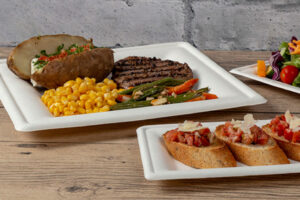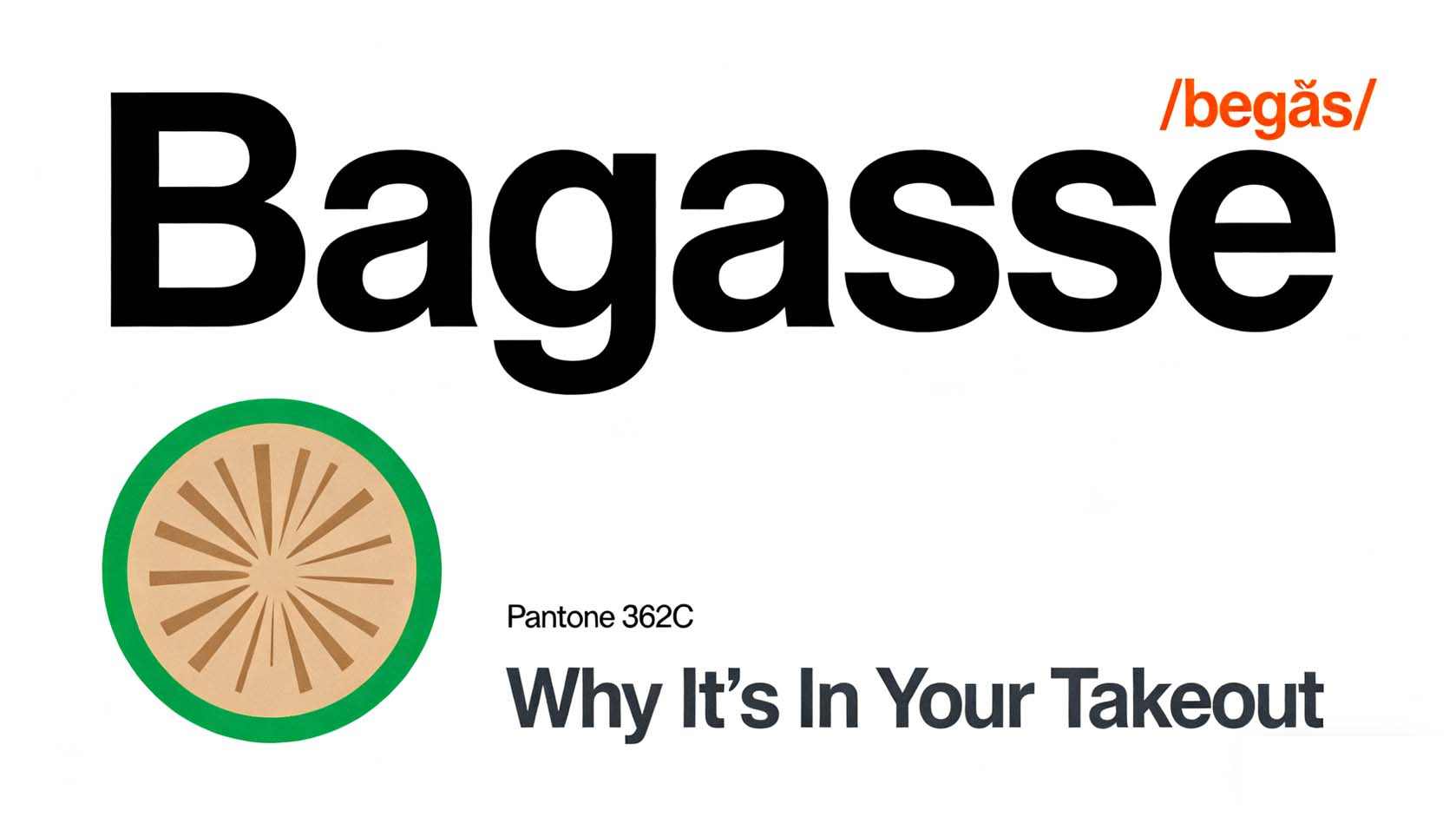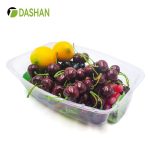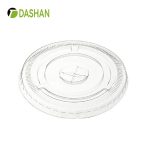Bagasse, a tableware material derived from sugarcane fiber, has emerged as one of the most promising biodegradable alternatives to single-use plastic and foam packaging. Strongly supported by global sustainability trends, municipal plastic bans, and the increasing consumer preference for eco-friendly products, bagasse is now widely used in restaurants, cafés, food delivery services, and retail supermarkets. Its strength, heat resistance, and compostability make it a practical and responsible choice for modern foodservice providers.
Introduction – Bagasse: From Agricultural Byproduct to Eco Packaging Hero
If you’ve ordered takeout, attended a festival, or visited an eco-conscious café recently, you may have unknowingly interacted with bagasse packaging. But what exactly is bagasse, and why is it becoming essential for sustainable foodservice?
Bagasse is the fibrous residue remaining after sugarcane stalks are crushed to extract juice. Traditionally considered waste, this material was either discarded or burned, contributing to pollution and carbon emissions. Today, bagasse has been transformed into a high-performance material suitable for plates, bowls, cups, and clamshell food containers. Its appeal lies in combining environmental responsibility with practicality—providing a sturdy, moisture-resistant, heat-tolerant solution while reducing reliance on petroleum-based plastics.
Global plastic pollution continues to escalate. According to a 2023 report from the United Nations Environment Programme, over 300 million tons of plastic are produced annually, with a significant portion entering landfills or oceans. Takeout packaging is a major contributor. Switching to biodegradable solutions like bagasse directly addresses this environmental challenge, helping businesses and consumers align with sustainability goals and regulatory compliance.
How to Pronounce Bagasse and Why It Matters
For many, the first obstacle is pronouncing the word itself. Bagasse can be confusing:
-
American English: buh-GAS (rhymes with “glass”)
-
British English: ba-GASS
-
Origin: French, historically referring to the leftover fiber from sugarcane or beet processing
Understanding and using the correct pronunciation is more than a fun fact—it empowers conversations about sustainability. Consumers and business professionals who are familiar with bagasse are more likely to identify eco-friendly packaging, ask for sustainable options, and promote environmentally conscious choices in their networks.
What Bagasse Is
Bagasse is composed of cellulose fibers from sugarcane stalks. After sugar extraction, the remaining pulp is dried, sterilized, and molded under heat and pressure to create a wide variety of tableware items. Unlike traditional paper or cardboard, bagasse maintains structural integrity even when holding hot or greasy foods. Its natural moisture resistance allows it to handle soups, curries, sauces, and other liquid-heavy meals without leaking.

Common Bagasse Products:
-
Plates (round, compartmentalized, or oval)
-
Bowls (deep soup bowls or salad bowls)
-
Takeout clamshell containers
-
Cups and lids
-
Paper soup containers
These products are widely adopted across restaurants, fast-food outlets, cafés, delivery services, and supermarkets, offering a premium look while remaining fully compostable.
Environmental Benefits of Bagasse
-
Reduction of Plastic Waste
By replacing single-use plastic plates, bowls, and cups, bagasse packaging significantly reduces environmental pollution. Unlike PET or polystyrene, which can take hundreds of years to decompose, bagasse breaks down completely in 60–120 days under industrial composting conditions. -
Circular Economy Contribution
Bagasse uses agricultural byproducts rather than virgin resources, supporting a circular economy. No additional trees are cut, and sugarcane waste, which would otherwise be burned, is repurposed into functional products. -
Carbon Footprint Reduction
Lifecycle analysis from the Journal of Cleaner Production (2022) found that bagasse packaging reduces carbon emissions by approximately 73% compared to polystyrene alternatives, largely due to the elimination of petroleum-based production.
Bagasse vs. Alternative Materials
| Material | Compostable | Heat Resistant | Leak-Proof | Source |
|---|---|---|---|---|
| Bagasse | Yes | Yes | Yes | Sugarcane waste |
| Plastic (PET) | No | Limited | No | Petroleum |
| Styrofoam | No | Limited | No | Non-renewable |
| Areca Palm Plates | Yes | Moderate | Medium | Fallen palm leaves |
While Areca palm plates are compostable and suitable for dry foods, bagasse excels with hot, saucy, or oily meals, making it ideal for most restaurant and takeaway scenarios.
Applications of Bagasse Tableware
1. Restaurants and Cafés
Many eco-conscious cafés and casual dining restaurants have switched to bagasse plates and bowls to meet consumer expectations for sustainable packaging. For example, a health-focused café chain in New York reported a 25% increase in positive customer feedback after introducing bagasse bowls for takeaway salads and noodles.
2. Food Delivery Services
Delivery apps and meal kit providers increasingly use bagasse containers to reduce plastic waste. Durable and leak-resistant, bagasse ensures food arrives safely while remaining fully compostable.
3. Supermarkets and Retail
Prepared food sections in grocery stores, including sushi, salads, and hot meals, often feature bagasse containers. They provide convenience without contributing to plastic pollution, enhancing the retailer’s sustainability credentials.
4. Outdoor Events and Catering
From music festivals to corporate events, bagasse products provide practical, environmentally friendly alternatives to disposable plastic plates and cups, capable of handling hot and greasy foods while maintaining a premium appearance.
Heat Resistance and Practicality
Bagasse packaging is suitable for a wide temperature range:
-
Can withstand hot meals up to 120°C (248°F) without warping
-
Compatible with microwave use for reheating meals
-
Maintains structural integrity with oils, sauces, and liquids
These characteristics make bagasse a viable replacement for almost all foodservice packaging applications, from takeout to buffet-style catering.
Bagasse Certification and Safety
For businesses and consumers, verifying compostability and food safety is essential:
-
EN13432: European compostable packaging standard
-
ASTM D6866: Certification of biobased content
-
BPI or TÜV OK Compost: International composting certifications
These certifications confirm that bagasse containers are fully industrially compostable, safe for food contact, and free from harmful chemicals.
Disposal of Bagasse
Bagasse disposal is simple and eco-friendly:
-
Industrial Composting: Breaks down in 60–90 days, leaving no microplastics
-
Home Composting: Can be shredded and added to compost bins
-
No Washing Required: Unlike recycling, bagasse can go straight into compost bins
Proper disposal ensures minimal environmental impact and supports zero-waste initiatives.
Why Bagasse Tableware Is the Future
The combination of environmental responsibility, practicality, and consumer demand drives bagasse adoption:
-
Reduces reliance on plastic and foam
-
Handles hot, oily, and saucy foods with ease
-
Enhances brand image for restaurants and retailers
-
Aligns with local, national, and global sustainability initiatives
Manufacturers DASHAN is leading the way, offering a range of certified bagasse containers and tableware that meet international standards for durability, safety, and eco-friendliness.
Global Policy Support
Plastic bans and sustainability regulations have accelerated bagasse adoption worldwide:
-
United States: Municipal bans on polystyrene containers and plastic cutlery
-
European Union: SUP Directive limiting single-use plastics, requiring certified compostable alternatives
-
Asia: Countries like China and India introducing nationwide restrictions on non-biodegradable disposables
These policies create market opportunities for bagasse tableware, incentivizing businesses to adopt eco-friendly packaging solutions.
FAQ
1. How do you pronounce “bagasse”?
-
American: buh-GAS | British: ba-GASS
2. What is bagasse made from?
-
Fibrous residue from sugarcane stalks, repurposed into eco-friendly packaging.
3. Why use bagasse for food packaging?
-
Durable, heat-resistant, and fully compostable, ideal for hot and saucy foods.
4. Can bagasse handle microwaving and oily foods?
-
Yes, designed to maintain shape and prevent leaks under heat and oil.
5. Can restaurants and delivery services replace plastics with bagasse?
-
Absolutely. Bagasse is widely used in foodservice, from takeout bowls to meal trays.
Conclusion
Bagasse has transformed from a sugarcane byproduct into a versatile, environmentally responsible packaging material. Its combination of heat resistance, durability, and compostability makes it a leading alternative to plastic and Styrofoam across restaurants, delivery services, and retail food markets.
As plastic bans increase globally and sustainability becomes a priority for consumers, bagasse tableware offers a practical, attractive, and eco-conscious solution. Manufacturers like DASHAN provide certified, high-quality products that help businesses meet regulatory standards, enhance brand reputation, and contribute to a more sustainable planet.
By understanding and adopting bagasse packaging, businesses and consumers alike can make measurable progress toward reducing plastic pollution and promoting a circular economy—while enjoying the convenience and reliability of modern foodservice tableware.
References
-
UNEP — Plastic Pollution / Everything You Need to Know
https://www.unep.org/news-and-stories/story/everything-you-need-know-about-plastic-pollution UNEP – UN Environment Programme+1 -
Life Cycle Assessment of Bagasse Waste Management Options
https://www.sciencedirect.com/science/article/abs/pii/S0956053X08004133 科学直通车 -
A Comprehensive Review on Sugarcane Bagasse in Food Packaging
https://www.researchgate.net/publication/387438824_A_Comprehensive_Review_on_Sugarcane_Bagasse_in_Food_Packaging ResearchGate -
Environmental Analysis of Sugarcane Bagasse Packaging Life Cycle
https://www.mdpi.com/2313-4321/8/2/44 MDPI -
Emerging Trends in Biomaterials for Sustainable Food Packaging
https://www.sciencedirect.com/science/article/pii/S2405844024001531 科学直通车
Disclaimer & Copyright Notice
This article is created by the Dashan Packing editorial and research team.
All information presented here is for educational and industry reference purposes only.
Some data and standards cited in this article are sourced from publicly available materials,
official regulatory documents, or third-party publications, which are properly credited where applicable.
All rights to third-party trademarks, images, and content belong to their respective owners.
If any copyrighted material has been used inadvertently, please contact us at angel@chndashan.com.
We respect intellectual property rights and will promptly remove or revise any material upon verification.






